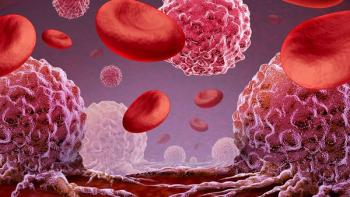
Moving Away from Chemo in Acute Promyelocytic Leukemia
A study shows that a chemotherapy-free regimen may be better in acute promyelocytic leukemia.
Progress in acute promyelocytic leukemia (APL) has reached about an 80 percent cure rate since the disease was first identified in the 1950s. A standard therapy for newly diagnosed patients is the chemotherapy idarubicin and ATRA (alltrans retinoic acid), a vitamin A derivative that doesn’t kill cancer cells but forces the immature cells to develop and die, allowing the bone marrow to make new, healthy cells. Although survival rates have increased with the addition of chemotherapy, so too have the side effects. Idarubicin, which is an anthracycline, can damage heart cells. Several studies have looked at using arsenic trioxide (ATO), which is currently used in patients who have relapsed, in the first-line setting, possibly sparing them the effect of idarubicin.
A study presented at the ASH conference compared the chemotherapy-free regimen of ATO plus ATRA to the standard treatment in newly diagnosed patients who have low- or intermediate-risk disease. After a median follow-up of 31 months, results were similar in both arms, including survival and relapse rates, with a trend leaning toward the ATO arm. Patients who received ATO had fewer blood-related side effects, although there was a higher incidence of liver toxicity and changes in heart rhythm. The effect was manageable, and no patient had to discontinue treatment due to the effect. The results of this study could usher in a new standard of care for patients with newly diagnosed APL.





